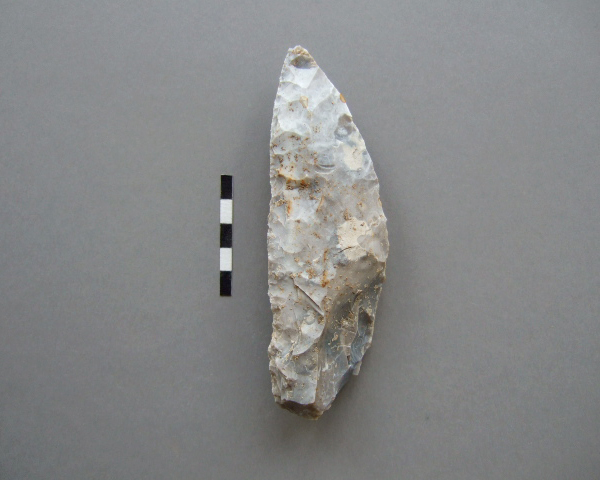
Day 134’s VM_365 image is of a flint knife, a prehistoric flint tool, that had been re-deposited in the fill of a chalk quarry pit dating to the medieval period and sectioned in excavations carried out in 2013.
The knife has been carefully flaked on both sides, it is slightly thinner and curved on the cutting edge. It is comfortable to hold in the hand and could have been used without being set in a wooden or bone handle or haft. The manufacture and use of this type of flint tool spans the Late Neolithic to Early Bronze Age c.2800-1700 BC.
The knife would have been used for everyday meat processing tasks, although it is definitely not a skinning knife, which are usually thin and often polished for the careful task of smoothly separating hide from flesh. Because it is a thick and heavy tool, it would have been ideal for butchering tasks; cutting joints; separating limbs and other heavy tasks.